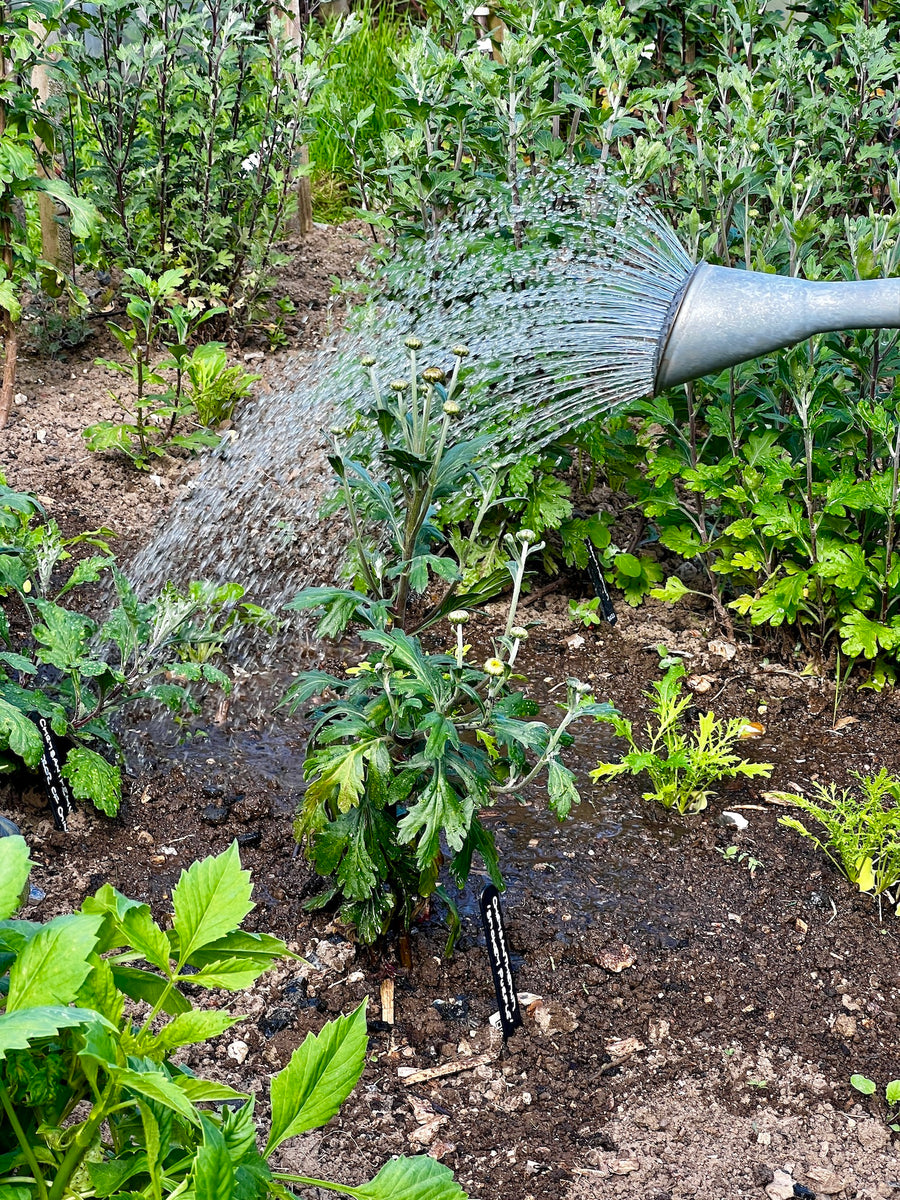Hosepipe bans are the last thing any gardener needs, coming as they do when our gardens most need water. However, they’re imposed with the intention of saving precious resources and not to make the lives of garden owners a misery. During times of drought, we all need to act responsibly and enter into the spirit of any short-term restrictions. With a ban announced in several Southern counties, we can assume that other areas may follow. Unless there’s significant rainfall in the next couple of months, we should expect restrictions to last well into the autumn or even winter.
For those of us with small gardens, the implications aren’t too serious. If we water with a hose, switching to a watering can isn’t too onerous - by my estimation, the job may take 50% longer. But for anyone with a large garden or allotment, a ban on sprinklers and hoses can be a major headache and cause to rethink watering priorities.
Here are my top tips for limiting any harm that might be done to your garden through restrictions on water usage.
Ahead of a ban
- Fill empty water butts - have some water in reserve at strategic points around the garden.
- Buy an additional lightweight watering can - metal watering cans are heavy, especially when full. Plastic cans are much lighter. It’s easier to carry one lightweight can in each hand rather than one heavy can in one hand. If you have a long distance to walk, transport the watering cans in a wheelbarrow to save effort and protect your back.
- Install a drip irrigation system* - some water companies permit the use of drip irrigation systems because they are so much more efficient than hoses and sprinklers.
- Start reducing the frequency of watering to see what you can get away with - most gardeners water more often than they need to. If you water your plants every day, try watering them every other day and see what you can get away with.
- Assess what needs watering most - if your garden is large, chances are you won’t be able to water everything during a hosepipe ban. See below for a list of plants and garden features that are more and less vulnerable in a drought. Be prepared to make some tough choices for your own health and wellbeing.
- Mulch - the surface of un-mulched soil can quickly become hydrophobic, meaning it’s resistant to absorbing water. Applying a mulch of compost or bark after a thorough watering will help the soil to remain absorbent.
During a ban
- Use any kind of grey water you can, but avoid wastewater with high concentrations of soap or cleaning liquids, especially when watering food crops.
- When you are able to water, water thoroughly so that the moisture penetrates far down into to soil, encouraging plants to develop deep roots.
- Aim the spout of your watering can at the base of each plant so that the water gets where it needs to be. Don’t sprinkle bare earth unless you’ve recently sown seeds in it.
- Help neighbours out - not everyone is able to carry heavy watering cans back and forth. If you think a neighbour may struggle, offer to help.
- Provide drinking water for wildlife - during dry weather, birds, insects and mammals will come to rely on garden water sources. Keep bird baths topped up and provide a source of water at ground level too. Provide means for creatures that fall in to crawl back out.
- Don’t flout the rules - using a hosepipe could sour relations with your neighbours and land you with a fine from your water provider. It’s simply not worth the aggravation.
*Before you do anything you’re uncertain of, please check the website of your water provider to understand the full detail of any measures.

Water me, please!
These plants and garden features are among the most vulnerable
- Fruit and leafy veg, for example, tomatoes, cucumbers, strawberries, lettuce, chard and parsley.
- Pots, containers and hanging baskets.
- Anything growing under glass.
- Thirsty tropical plants, for example, cannas, bananas and gingers.
- Ferns, hostas, acers and tree ferns.
- Camellias and rhododendrons.
- Seedlings and cuttings.
- Newly planted trees and shrubs.
- Bog gardens.
- Recently laid turf (exceptions are made for these so check with your water provider for details).
We can cope!
These plants and garden features are less susceptible to drought, although not invincible.
- Established trees and shrubs including hedges**
- Native plants.
- Wildflower meadows.
- Annuals (they naturally don’t have long to live and can be sacrificed).
- Succulents, cacti and silver-leaved plants (these are naturally drought tolerant).
- Established lawns.
** leaf drop during a prolonged dry spell is a plant's natural way of protecting itself from dehydration. Although a sign of stress, it's not a cause for alarm.
My parting advice is not to fret. Although our weather is undoubtedly becoming more extreme and droughts may become more frequent, most plants will surprise you with their ability to bounce back after a period of rain.
See Also
- How to Prepare Your Garden for the Summer Holidays
- Simple Summer Houseplant Care
- How to Help Your Garden Survive a Heatwave
- How to Water Wisely


